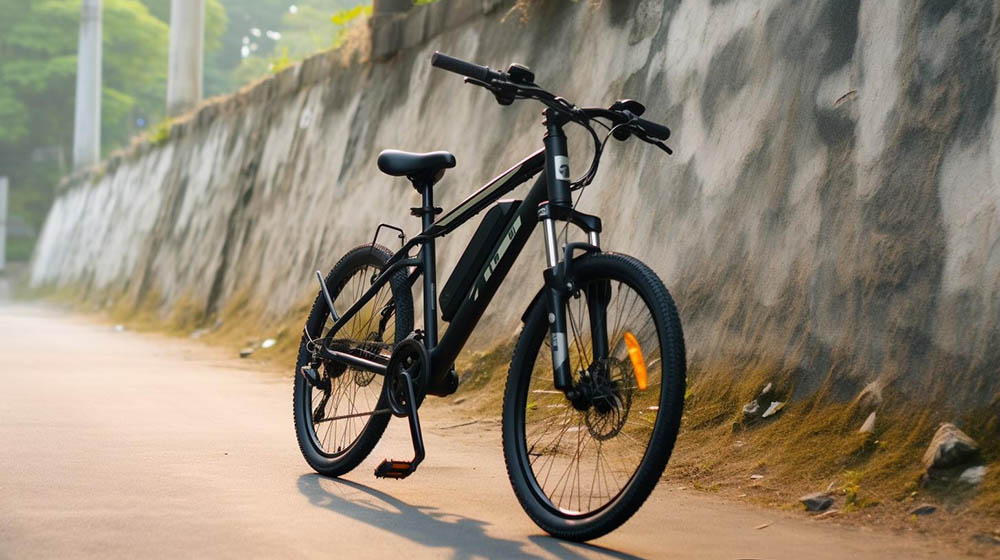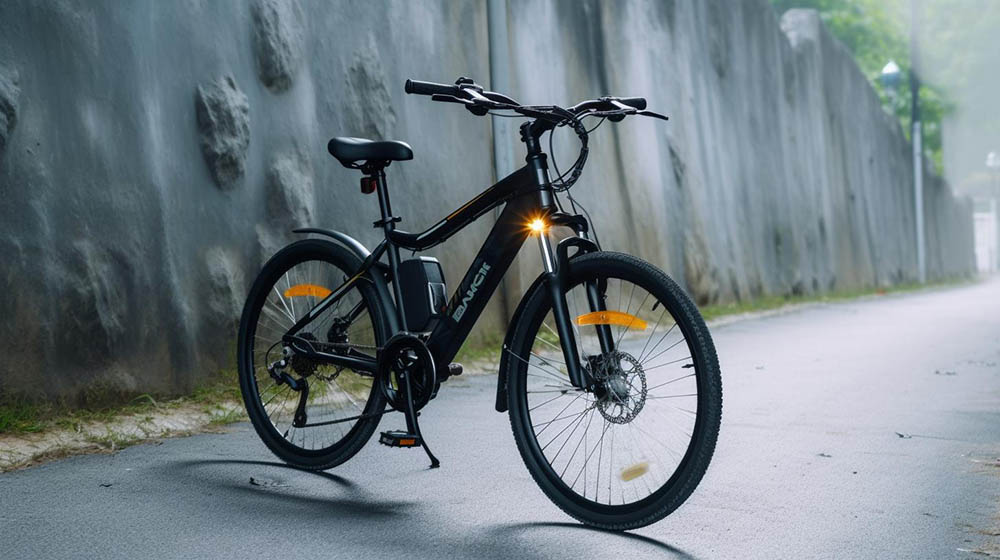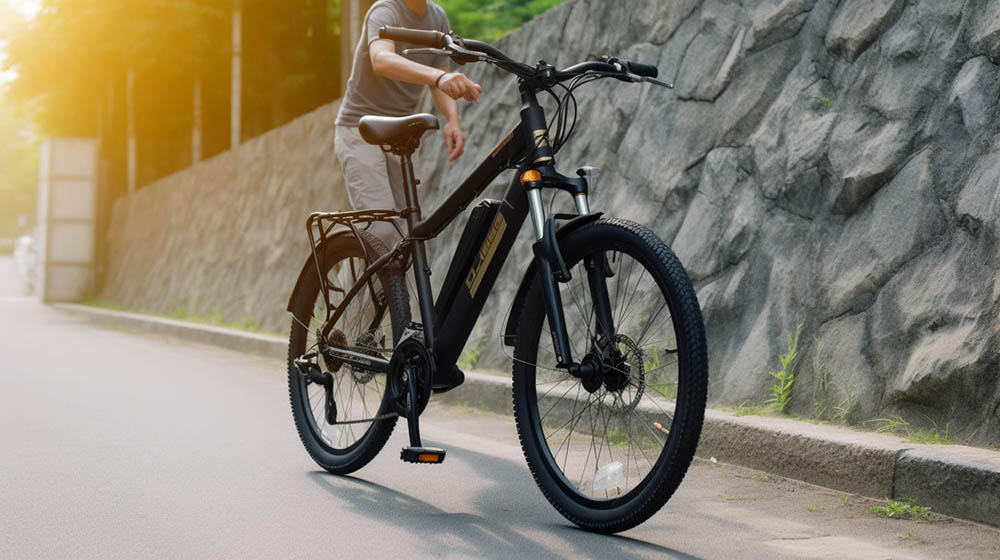What’s the fastest e bike? A Detailed Comparison of Top Speed E-bikes
Electric bikes, also known as e-bikes, are becoming increasingly popular for commuting, exercise, and thrill-seeking. With the ability to reach speeds much faster than traditional pedal bikes, many riders are drawn to the exhilarating speed of high-performance e-bikes. But with so many e-bike models available, how do you determine which is the absolute fastest e-bike?
This comprehensive guide examines key factors that contribute to e-bike top speed. We compare many of the fastest production e-bikes on the market in 2023 and analyze their motors, batteries, frames, tires, gearing, weight, aerodynamics, and other speed-related features. Read on to discover the current speed kings of the e-bike world!
Key Factors That Determine E-bike Top Speed
Several key components and design factors play a role in allowing an e-bike to reach its maximum speed. Here are some of the most important elements:
Motor power – The wattage rating of the electric motor largely determines the torque and acceleration it can produce. More powerful motors can spin the wheels faster.
Battery voltage – Higher voltage packs can deliver more power to the motor for increased speed. Lithium-ion batteries typically range from 24V to 72V.
Gearing – The drive system gearing affects torque and pedaling cadence. High gear ratios deliver more speed, while low ratios provide more torque for climbing hills.
Tire size – Larger diameter wheels and tires cover more ground per pedal stroke or motor rotation for higher speeds.
Aerodynamics – Sleek, low-drag bike frames and rider positioning can significantly boost top speed by reducing wind resistance.
Rider weight – Heavier riders require more power to accelerate to high speeds. Lightweight e-bikes and riders have an advantage.
Terrain – Steep hills limit speed, while flat ground or descending allows reaching maximum speed.
Now let’s see how the fastest production e-bikes utilize these factors to reach crazy fast speeds!

Delfast Top 3.0 – Fastest Production E-bike at 90+ mph
Top Speed: 90+ mph (145+ km/h)
Motor: 7,000W nominal, 10,000W peak rear hub motor
Battery: 52V 35Ah (1,820 Wh) lithium-ion
Gearing: Single speed with removal freewheel
At the top of the production e-bike speed ladder is the stunning Delfast Top 3.0 – the world’s fastest street-legal electric bicycle. This featherweight e-bike tips the scales at just 77 lbs (35 kg) but packs an astonishingly powerful motor and battery.
The Top 3.0 is propelled by a mammoth direct drive hub motor in the rear wheel rated for a continuous 7,000W of power (10,000W peak). This motor spins a large 26 x 3.0″ front wheel and tire up to 90+ mph on the flats. It draws juice from a huge 52V 35Ah lithium battery with a capacity of 1,820 Wh.
To reach its crazy top speed, the Top 3.0 runs a single speed direct drive gearing setup with no freewheel. This maximizes torque transfer efficiency while the powerful motor provides cadence assistance up to extreme speeds. The entire bike is optimized for aerodynamics from its narrow profile frame to dropped handlebars to reduce drag.
Make no mistake, the Delfast Top 3.0 is built for speed above all else. It’s far and away the fastest production e-bike available today, but that performance comes at a price. This exotic e-bike costs a staggering $15,000 USD base price. For those seeking the ultimate in two-wheeled speed thrills though, the Top 3.0 stands alone.
Specialized Turbo Levo SL – Fastest Production E-MTB at 45 mph
Top Speed: 45 mph (72 km/h) estimated
Motor: 240W nominal rear hub motor
Battery: 320Wh or 700Wh lithium-ion
Gearing: 10-speed 11-42T
Switching gears from the road to the dirt, the Specialized Turbo Levo SL is the fastest production electric mountain bike we’ve seen…by far. Don’t let its laidback appearance fool you – this eMTB absolutely flies, with a top speed estimated at around 45 mph!
The Turbo Levo SL’s velocity secret is its featherweight carbon frame and skimpy components that pare this bike down to just 37 lbs. The svelte profile cuts through the wind while the 240W rear hub motor has very little mass to accelerate. It spins a tiny 700c wheel wrapped with a narrow road tire.
This setup allows the Levo SL to leverage its low weight and aerodynamics to hit shockingly fast speeds. Testers report hitting 40+ mph on flats regularly, and Specialized insiders hint at topping out above 45 mph – very rare territory for a production eMTB.
Of course, pedaling a Turbo Levo SL that fast off-road would be incredibly risky. But its speed potential on pavement is unmatched among current electric mountain bikes. The Levo SL proves that lightweight design can sometimes trump raw power for maximum velocity.
Faraday Porteur – Fastest Electric Bike Under $5K at 40+ mph
Top Speed: 40+ mph (64+ km/h)
Motor: 500W nominal rear hub motor
Battery: 48V 10.4Ah (500Wh) lithium-ion
Gearing: Single speed with freewheel
Looking for EV speed on a real-world budget? The Faraday Porteur offers outrageous electric bike performance and 40+ mph top speeds for under $5,000. This urban rocket weighs just 39 lbs and sends all that power to the rear wheel via a 500W brushless hub motor.
It achieves such fast velocity despite the small motor thanks to ultra-efficient power transfer through its single speed gearing. The Porteur forgoes derailleurs for a simple freewheeling cog that puts every watt into acceleration. There’s no fancy suspension either – just a stiff aluminum frame to put all that force into the tarmac.
A tidy lithium-ion battery rated for 48V and 10.4Ah (500Wh) supplies the juice. While the Porteur’s range is somewhat limited, its power delivery and speed focused design make it perhaps the fastest affordable e-bike available today.

Juiced HyperScorpion – Fastest E-bike Under $3K at 50 mph
Top Speed: 50 mph (80 km/h) claimed
Motor: 1,000W geared rear hub motor
Battery: 52V 14Ah (730Wh) lithium-ion
Gearing: 7-speed 11-34T freewheel
The Juiced HyperScorpion hits an incredible balance between high speed and reasonable cost as potentially the fastest sub-$3,000 production e-bike. Available direct-to-consumer online, the HyperScorpion uses a 1,000W geared hub motor to deliver both torque and extreme top end.
This unusual geared hub design has internal gear reduction to provide tons of torque for acceleration and hill climbing. But it has a high drive ratio optimized for speed as the wheels get up to speed. Juiced claims a 50 mph top speed, and we estimate 40+ mph is very realistic for the HyperScorpion.
It shatters the limits of most bargain-priced online e-bikes. The HyperScorpion’s 52V 14Ah battery and included 19.2Ah range extender offer tremendous range as well. With its rare blend of power, speed, and value, it earns a spot among today’s fastest e-bikes.
Stealth Bomber – Fastest E-bike Under $2K at 50+ mph
Top Speed: 50+ mph (80+ km/h) claimed
Motor: 1,000W geared rear hub motor
Battery: 48V 10.4Ah (500Wh) lithium-ion
Gearing: Single speed freewheel
The aptly named Stealth Bomber from retailer Ebikeling offers true stealth fighter performance and potentially 50+ mph top speeds for well under $2,000. It achieves such fast velocity using a 1,000W geared rear hub motor driving the wheel through single speed gearing.
Rather than relying on multiple gears, the Bomber’s direct drive setup transfers all motor power directly to the rear tire. A 48V 10.4Ah (500Wh) Panasonic lithium battery feeds the ample juice. The Bomber’s full suspension, front and rear disc brakes, and motorcycle-style handlebars complete the superbike look and feel.
For those seeking extreme electric bike speed on a budget, few alternatives come close to matching the Stealth Bomber’s performance claims. If its 50+ mph top speed estimates hold true, this e-bike offers unprecedented velocity and affordability.
Specialized Turbo Vado SL – Fastest Class 1 E-bike at 28 mph
Top Speed: 28 mph (USA) – 45 km/h (Europe)
Motor: 240W nominal rear hub motor
Battery: 320Wh lithium-ion
Gearing: 10-speed 11-42T
In places with e-bike speed regulations, like the USA and Canada, fast electric bikes are limited to 28 mph and 20 mph, respectively. The Specialized Turbo Vado SL takes advantage of every bit of that 28 mph Class 1 speed limit, making it likely the fastest production bike in its class.
Sharing a frame design with the off-road Turbo Levo SL, the Vado SL road bike also leverages a lightweight carbon fiber frame and 240W motor to rocket to 28 mph velocity. Its integrated 320Wh battery and internal cable routing optimize aerodynamics. The 10-speed drivetrain delivers a tall top gear for maintaining high speeds.
For riders wanting to race around town as fast as legally possible, the Turbo Vado SL is purpose-built to milk every bit of performance from the Class 1 specification. For a certified 28 mph top speed e-bike with slick looks and handling, it doesn’t get much quicker than this stealthy Specialized.
Additional Fast Electric Bikes to Consider
The e-bikes above represent the cutting edge of production electric bike speed today. But many other fast models are also worth highlighting:
Cake Kalk& – Off-road lightweight reaches 50+ mph
Superstrata – 3D printed carbon and integrated battery for 28 mph
Stromer ST5 – 45 km/h Class 3 speed pedelec with 890Wh battery
Elektron F-85 – High-end carbon road e-bike hits 45 km/h
Specialized Turbo Como SL – Lightweight motor assists to 28 mph
Bacoo Mantis – This carbon speed pedelec has a top speed of 45 km/h
While not quite as fast as the speed record models profiled earlier, these e-bikes represent a breed of quickly emerging performance electric bicycles. They take advantage of new technology, design principles, and consumer demands for faster electrified transportation and recreation.
Factors that Affect E-bike Top Speed
As seen above, a number of factors have a major influence on how fast the fastest e-bikes can propel a rider. Here are some of the most critical elements:
Motor Power and Efficiency
The power rating of the electric motor has a direct impact on the achieved top speed by determining the bike’s maximum possible acceleration. More powerful motors can spin the wheels faster. Mid-drive motors that transfer force more efficiently through the drivetrain generally achieve higher speeds than hub motors.

Battery Voltage and Capacity
Higher voltage batteries can deliver more sustained power to achieve speed. Lithium-ion packs range from 24V entry-level batteries up to 72V performance batteries used on the fastest bikes. Higher battery capacity also provides extended high power.
Gearing and Drivetrain
The gearing and drivetrain determine mechanical power transfer efficiency. Single speed direct drive or high top-end gears maximize speed. But mid-drives can take advantage of multiple gears for better efficiency through a wider powerband.
Weight and Aerodynamics
Lightweight bikes require less power to accelerate and sustain speed. Sleek, low-profile bike and rider positioning reduce drag for significantly faster high speeds than more upright designs.
Wheel and Tire Size
Larger diameter wheels cover more ground per revolution at a given speed. Road bike wheels are typically faster than eMTB wheels. Big wide tires create more aero drag than narrow road tires.
Rider Position and Fit
An aerodynamic rider stance in dropped handlebars reduces drag at high speeds much more than an upright position. Integrated motors and cables also optimize airflow.
Rider Weight
Heavier riders increase system weight requiring more motor power to achieve equal acceleration and speed. Lightweight riders will find it easier to reach higher velocities.
Terrain and Conditions
Steep hills limit speed, while flat roads or descending allow the bike to reach its maximum speed. Headwinds reduce speed, while tailwinds can boost it. Hard smooth pavement is faster than loose or uneven terrain.
By combining the ideal setup of these factors, elite performance e-bikes continue to push the envelope of electric bicycle speed limits. As motors, batteries, and designs improve, we can’t wait to see how fast they’ll ultimately go!
Are High-Speed E-bikes Safe?
Riding an ultra-fast electric bike can provide an exhilarating thrill and allow efficient high-speed commuting. But with great speed comes increased risk. Here are some key e-bike safety considerations:
Bicycle limitations – Bicycles lack safety features like roll cages, airbags, and antilock brakes that make high speeds safe for motorcycles and cars. Any crash or spill at high velocity poses serious hazards.
Rider protection – Quality helmets, gloves, and protective riding gear can prevent major injuries in a high-speed fall. Riding nude boosts risk.
Speed control – Uncontrolled acceleration or torque can cause loss of traction or control. Smooth throttle control is key, especially when leaning on turns.
Brake performance – E-bikes reach speeds exceeding their braking capabilities for rapid controlled stops. Upgraded brake rotors, pads, and hydraulic disks markedly improve braking.
Frame and component strength – E-bike frames and components must be engineered for speed with wide safety margins. Fast riding can overstress sub-par components leading to failure and accidents.
Rider skill and training – High-performance riding requires expert bike handling and technique. Lack of skills raises chances of crashes. Seek advanced skills training and practice extensively before hitting extreme speeds.
Traffic laws – Most jurisdictions limit e-bike speed to 20-28 mph. Exceeding those limits on public roads is illegal. Reserve extreme speed for closed courses. Obey all traffic laws.
Inspection and maintenance – Carefully inspect and maintain every bike component, performing test rides up to max speed and braking performance verifications before open road riding. Replace any failing or worn parts immediately.
With vigilance to safety, advanced training, and responsible riding, high-speed thrills on e-bikes can be enjoyed responsibly by some riders. But always manage speed in relation to your riding environment. Slow down and stay safe out there!
Choosing the Right High-Speed E-bike
If you’re tempted by the speed demons above, here are some tips for selecting a fast yet practical e-bike:
Match intended riding purpose – road, off-road, commuting, recreation, etc. Choose an appropriate e-bike category and features.
Consider your typical terrain – hilly or flat, smooth pavement or rough trails. Choose fit power, speed, range.
Gauge your riding skills – novice, intermediate, advanced, expert? Don’t exceed your handling capabilities.
Select reputable brands with high build quality, warranties, support, and safety engineering.
Ensure all speed ratings and claims are based on real-world tests, not just marketing hype.
Buy only from authorized dealers to guarantee authentic, compliant e-bikes.
Follow your country’s e-bike regulations – stick to legal classes to avoid issues.
Budget appropriately for the performance level you’re seeking. Quality speed has a cost.
Prioritize safety gear – always wear a helmet minimum, as well as gloves, glasses, and protective jackets and pants.
Get proper training on handling your e-bike at speed – don’t wing it!
Start slowly and work your way up as your skills progress. Even pros avoid max speed at all times.
Enjoy the thrill of speed in appropriate places, but remember that raw pace isn’t everything. Focus on the overall riding experience in most situations.
Choose your e-bike speed machine wisely. Apply the above guidance, stay responsible, and enjoy the ride!
Sign up for our email list and be entered to win a Pioneer Electric Bike
 Shuangye ebike
Shuangye ebike
